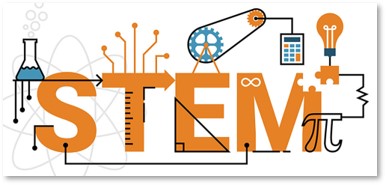
There are many different fields where physics can be used in engineering, including architecture, mechanical design, and civil engineering. This branch of science includes many elements of science including mathematics, chemistry and biology. This discipline includes mechanical engineering. Below are some of most prominent applications of Physics in Engineering. Physics is useful for engineering and can also be used to better understand other sciences like biology, computer science, and computer programming.
Applied physics
Applied physics is the use of physics and engineering to solve problems. This is generally a bridge between engineering and physics. However, there are many similarities between the two. Here are the differences and how applied physics can benefit engineers. Here are some of the most important differences. These differences will help determine if applied Physics is the right choice for you. Creative thinking is key to applying Physics.

Quantum mechanics
Although quantum mechanics may seem like an obscure subject for engineers it is very relevant to many other fields. The study of quantum mechanics is not for the faint of heart. It can be applied in many areas of engineering, even though it requires intensive concentration and training. Quantum mechanics is useful in conceptual design, research, and development of advanced equipment. Quantum mechanics may not be an ideal choice for students in computer science or mechanical engineering departments.
Body diagrams free of charge
The idea behind free body diagrams is to illustrate the action between two bodies. They may be linked by some network. They are vulnerable to time periods, applied forces, and responses. They can also contain multiple interior parts or be compact bodies. Sometimes, it is necessary to have a number of bodies free in order to solve complex problems. Let's start by understanding what they are.
Applications to engineering
Many aspects in modern life are based upon the principles of Physics, such as the planning and constructions of buildings, the use and design of electric power systems and the design of transportation systems. Applications of physics in engineering can be found in countless aspects of everyday life, such as lighting and acoustics. Modern sanitation systems also depend on solid physics principles. The principles of physics are used to create everyday conveniences such as lightweight aircraft parts and bulletproof uniforms.

Effective educational methods for teaching physics to engineers
One of the earliest reports focusing on successful educational approaches to teaching physics to engineers was written by W.W. Watson of Yale. W.W. Watson of Yale derived his ideas largely from the 1955 Report on Physics in Engineering Education. This report stressed that the most important aspect of teaching physics was curriculum. He proposed that teaching physics should concentrate on producing scholars.
FAQ
Is engineering a rewarding career?
Engineering is a rewarding career that allows you to learn and improve your skills. You can make a positive difference in people's life. You have many options to make a difference in people's lives.
You could design products such as cars, planes, trains, computers, mobile phones, etc. These devices could also be built or software developed by you. Or perhaps you would create medical equipment or machinery. There are so many possibilities!
Engineers enjoy working alongside others to solve problems and find solutions. Engineers are always seeking new challenges and learning opportunities.
Engineering is a good career choice. However, it takes hard work and dedication. It is more than just watching TV. To achieve the desired outcomes, you will have to put in lots of effort. But the rewards are worth it.
What do electrical engineers do?
They create power systems that can be used by humans.
They are responsible of designing, building and testing all types electrical equipment that is used by residential and commercial customers.
They also plan and direct the installation of these systems, including planning and coordinating the activities of other trades such as architects, contractors, plumbers, etc.
Electrical engineers design and install electronic devices, circuits, and components that convert electricity into useful forms.
Which engineer makes the highest salary?
Software engineers would be the correct answer. They are the ones who code for computers. Software engineers also have the freedom to choose what type of project they would like to work on. Software engineers can work in any industry, but they usually choose to work at tech companies such as Google or Microsoft.
How much do engineers make an hour?
This can vary from person to person, and company to company. An average salary for a entry-level software engineer is about $60,000 per year. This number goes up to over $100,000 after you have worked for a few years.
Which engineering is the hardest?
The greatest engineering challenge is designing a system that is strong enough to withstand all types of failure, yet flexible enough for future changes.
This requires a lot of testing and iteration. This requires an understanding of the system's behavior when things go wrong. This is where you must ensure you aren't solving just one problem.
Statistics
- 14% of Industrial engineers design systems that combine workers, machines, and more to create a product or service to eliminate wastefulness in production processes, according to BLS efficiently. (snhu.edu)
- 8% Civil engineers solve infrastructure problems. (snhu.edu)
External Links
How To
How to Write Engineering Drawing Letters
Engineer drawings can be divided into two categories: engineering sketches (also called technical drawings) or architectural drawings. The first shows the product’s physical features. While the second shows how the product should appear. Each type includes detailed specifications, dimensions and symbols as well as text and arrows. Engineers will use their own language to write these documents. They can refer to specific units or abbreviations as well as acronyms. These terms are called engineering lingo. This article explains what they mean.
A letter refers to a formal document sent by an individual/organization to another person/organization. It typically includes a greeting and salutation, signature as well as date and closing remarks. A self-introduction is often included at the start of a letter. Some letters might contain business details such as legal agreements. Other letters might only include greetings and signatures.
Engineers use their professional experience to create a plan, design machines, build bridges, and draw diagrams. Engineers must communicate clearly in order to convey their work. Technical terms refer to the product, process or materials used and their methods.
Engineers often use special terms to explain things. They use the term "ampere" for electrical current. Or they say "kilogram per meter squared" to measure mass. These terms are called scientific numbers. They are called common names by other engineers, as they are widely used. Common names are easier and more comprehensible to remember.
Technical terms are often abbreviated. An abbreviation denotes a longer phrase. Example: "kW" means kilowatt. The term "KW" is a kilowatt. The full name doesn't need to be memorized.
Engineers also use many abbreviations or acronyms in technical terms. These are similar to abbreviations but are made up of several words. Examples of these are "IEC", "DIN," or "ANSI." These are essential because they facilitate communication and make it easier.
Engineers may not use standard spelling rules when using their jargon. They may spell out numbers using digits instead number. They may use different capitalizations from the norm. Capitalization refers either to the capitalization of a word's beginning letter, or whether it begins with lowercase letters. Words that begin on a vowel sound have different spellings than those that begin on consonants.